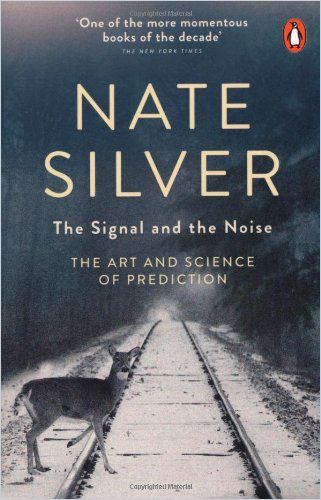Statistician and founder of The New York Times political blog FiveThirtyEight.com, Nate Silver explains predictions and tells you when to trust them – especially your own.

Don’t Rely on Predictions
Statistician, writer and founder of The New York Times political blog FiveThirtyEight.com, Nate Silver also developed PECOTA, a system for forecasting baseball performance that Baseball Prospectus later purchased. Time magazine named Silver one of the world’s 100 Most Influential People.
Silver’s singular combination of rigorous, imaginative research, daring predictions and refusal to take himself seriously – though he is dead serious about his results – led to uniformly positive reviews for his book. The New York Review of Books called this, “One of the more momentous books of the decade… A serious treatise about the craft of prediction – without academic mathematics – cheerily aimed at lay readers.” The Wall Street Journal wrote, “Mr. Silver’s breezy style makes even the most difficult statistical material accessible.”
Information Explosions
Silver opens with Johannes Gutenberg’s invention of the printing press in the 1400s, an advance Silver credits with sparking the first massive expansion of access to knowledge, changing the availability of information.
We face danger whenever information growth outpaces our understanding of how to process it.Nate Silver
Silver compares this to the web’s early days, as access to information grew faster than people’s ability to sort good information from “mistruths.” Consequently, he concludes, people became more sectarian: They clung to positions they agreed with and ignored the rest. Silver asserts that this guarantees only ignorance. He urges you to consider an issue thoroughly and to learn to sort signal from noise.
Good Predictions
Silver quotes philosopher Isaiah Berlin, who divided people into “hedgehogs,” who see the world through a single theory or believe in a “Big Idea” and “foxes,” who combine several small ideas and approaches.
The signal is the truth. The noise is what distracts us from the truth.Nate Silver
Silver paints hedgehogs as good TV show guests: Their predictions are bold and simple. But they fail, Silver underscores, because they let their political ideology overrule reality.
Gambling
Silver explains that you can make a living as a professional gambler if you work hard, learn to forecast the future in specific ways and – he names this as the greatest challenge – develop the emotional discipline to see data clearly.
Poker’s possible outcomes, Silver reveals, are much more limited than those of professional sports. The odds of getting a particular hand at any given time are finite. The author discloses how the best players roughly calculate those odds on the fly, adjusting their chances with the exposure of each card.
Climate Change
Silver urges “healthy skepticism” about any specific model of climate change. Weather is a complex and dynamic system, and climate is even more so. Scientists, he posits, are still learning about factors that affect climate and weather, such as solar activity. However, he makes it clear that climate change itself is a documented fact.
Earthquakes
Silver turns poetic when he states that earthquakes turn something solid and dependable into something shifty and deadly. He presents the challenge of predicting earthquakes as different from predicting weather problems. Scientists understand the forces involved in weather, but they don’t understand what happens beneath the surface of the Earth. Earthquake prediction, the author believes, provides a good example of “overfitting,” a model that fits the noise of a situation rather than the signal.
Finance and Economics
Responsible political polls always explain their margin of error. Unfortunately, Silver notes, economic forecasts often do not; they cite specific numbers without qualifying their likelihood. Silver fears this gives people a false sense of certainty, and conveys the impression that economics is a more precise science than it is.
In many cases involving predictions about human activity, the very act of prediction can alter the way that people behave.Nate Silver
Forecasters face little accountability, the author recognizes, because few people track the accuracy of economic predictions.
Unknowns
Silver, citing the intelligence challenges in judging threat levels, quotes former US Defense Secretary Donald Rumsfeld saying that such circumstances offer “known knowns” – facts that people know they know – and “known unknowns” – which people can’t identify with certainty but know exist. These known unknowns are less risky than “unknown unknowns,” which are so foreign to popular thinking that experts refuse to consider them.
Dry Humor
Silver writes with honesty, humility and fine dry humor. He is a unique numbers nerd in that he offers surprisingly elegant, humane and comprehensible English. His mission is to clarify the messages, methods, self-deceptions and professional fallacies of those who vest in numbers, but lack Silver’s genius for clear explanations of complex numerical concepts. They also lack his high moral purpose. Silver genuinely seeks to enlighten people who labor under certain misconceptions about numbers and their applications – in other words, pretty much everyone, including those, Silver points out, whose life work is numbers and their applications. Silver is as much fun as he is informative, and he is informative, indeed.
If numbers and an eccentric, knowing application of them speaks to you, you will also enjoy Numbers Rule Your World by Kaiser Fung and The Drunkard’s Walk by Leonard Mlodinow.




